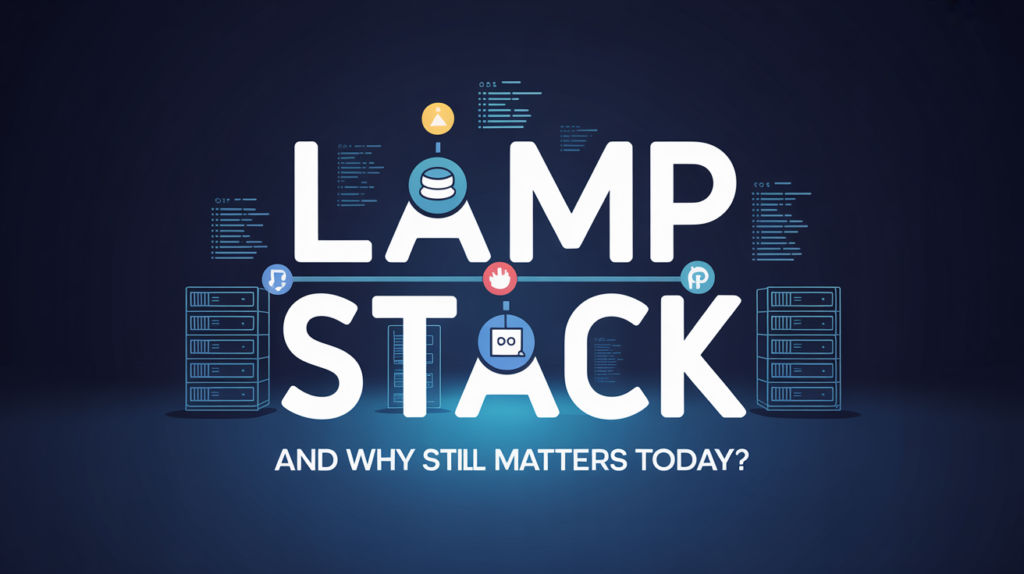LAMP stack has long served as a foundational platform for web development, offering an open-source, reliable, and flexible framework. Comprised of four main components—Linux, Apache, MySQL, and PHP—the LAMP stack provides a complete environment to build and deploy dynamic web applications. Despite the emergence of newer technology stacks, LAMP remains relevant due to its stability, cost-effectiveness, and widespread community support.
What Does LAMP Stand For?
Each component of the LAMP stack plays a critical role in its architecture:
- Linux: The operating system that underpins the stack, known for its robustness and security.
- Apache: A popular web server that handles HTTP requests and serves web content.
- MySQL: A powerful, open-source relational database management system used to store and retrieve application data.
- PHP: A server-side scripting language used to create dynamic content that interacts with databases.
How the LAMP Stack Works Together
The synergy between the components of the LAMP stack is what makes it so effective:
- Linux acts as the base platform.
- Apache serves as the intermediary, receiving requests from clients and responding with appropriate content.
- PHP scripts are processed by the web server to generate HTML content dynamically.
- MySQL stores and manages application data, which PHP scripts can query to serve dynamic content.
This seamless integration allows developers to build powerful, database-driven applications with minimal setup.
History and Evolution of the LAMP Stack
The LAMP stack originated in the late 1990s when open-source technologies began gaining traction. It was one of the first stacks that offered a cost-effective alternative to proprietary solutions. Its growth was driven by the rise of early content management systems (CMSs) like WordPress, Joomla, and Drupal, all of which are based on LAMP. Over the years, the stack has evolved with the introduction of new tools and extensions, yet the core components have largely remained consistent.

Why the LAMP Stack Gained Popularity
Several factors contributed to the popularity of LAMP:
- Open Source: All components are free and open-source, reducing costs and increasing transparency.
- Community Support: A large and active community offers extensive documentation, forums, and support.
- Flexibility: Easy to customize and suitable for a wide range of applications.
- Stability: Proven track record in powering millions of websites.
These benefits made LAMP the go-to stack for startups, educational institutions, and large enterprises alike.
Read Also: How Email Deliverability Affects Hosting Configuration
Advantages of Using the LAMP Stack
The LAMP stack offers several compelling advantages:
- Cross-Platform Compatibility: While it typically runs on Linux, it can be adapted for other platforms.
- Scalability: Suitable for both small websites and large-scale applications.
- Security: Strong security practices and tools are available for all components.
- Performance: Optimized configurations can yield excellent performance metrics.
- Modularity: Individual components can be swapped (e.g., using MariaDB instead of MySQL or Python instead of PHP).
Common Use Cases and Applications
The LAMP stack is used across various domains:
- Content Management Systems: WordPress, Joomla, Drupal.
- E-commerce Platforms: Magento, OpenCart.
- Custom Web Applications: Blogs, forums, customer portals.
- Educational Platforms: Learning Management Systems (LMS) like Moodle.
- Data Analytics Dashboards: Lightweight dashboards leveraging PHP and MySQL.
Its versatility makes it a strong choice for most web-based projects.
LAMP vs. Other Stacks (e.g., MEAN, MERN, JAMstack)
Comparing LAMP to modern stacks:
- MEAN/MERN: JavaScript-based stacks (MongoDB, Express, Angular/React, Node.js) offer modern features but have steeper learning curves.
- JAMstack: Focuses on performance and decoupling frontend from backend; good for static sites and headless CMS.
- LAMP: Simpler and more mature, ideal for server-rendered dynamic applications.
LAMP might not be as trendy, but it provides reliability and ease of use that newer stacks may lack.
Customizing and Extending the LAMP Stack
Developers often modify LAMP components to better suit their needs:
- Replace MySQL with MariaDB or PostgreSQL.
- Swap PHP for Python or Perl.
- Use Nginx instead of Apache for better performance in some scenarios.
These customizations lead to variants like LEMP (Linux, Nginx, MySQL, PHP) and LLMP (Linux, Lighttpd, MySQL, PHP).
Modern Relevance of the LAMP Stack
Despite the influx of newer technologies, LAMP remains highly relevant:
- Widely Supported: It still powers a large percentage of the internet.
- Continually Updated: Components like PHP and MySQL receive regular updates.
- Ideal for Legacy Projects: Many existing applications still rely on LAMP.
LAMP is also a great stack for learning fundamental web development concepts, serving as a gateway to more complex stacks.
Security Considerations with LAMP
Security is always a top concern in web development:
- Apache: Secure configuration files (e.g., .htaccess), disable directory listings.
- MySQL: Use strong user credentials, avoid root access for applications.
- PHP: Keep versions updated, use input validation to prevent XSS and SQL injection.
- Linux: Apply regular updates and patches.
Implementing firewalls, using HTTPS, and securing file permissions are also essential.
Performance Optimization Tips for LAMP
To get the most out of LAMP, consider these optimization strategies:
- Enable Caching: Use tools like OPcache for PHP and query caching for MySQL.
- Optimize Queries: Write efficient SQL and use indexing.
- Use a CDN: Offload static resources for faster global access.
- Tune Apache: Adjust worker settings, disable unnecessary modules.
Monitoring tools like New Relic or GTmetrix can help identify and address performance bottlenecks.
Deploying a LAMP Stack: Step-by-Step Overview
Here’s a basic outline for setting up a LAMP stack:

- Install Linux: Choose a distribution like Ubuntu or CentOS.
- Install Apache:
sudo apt install apache2 - Install MySQL:
sudo apt install mysql-server - Install PHP:
sudo apt install php libapache2-mod-php php-mysql - Test Setup: Place a PHP file in the web directory to confirm proper configuration.
- Secure and Optimize: Configure firewalls, update packages, and set up SSL certificates.
Automation tools like Ansible or Docker can simplify deployment and scaling.
Read Also: The Role of CageFS in Shared Hosting Security
Best Practices for Maintaining a LAMP Environment
Maintaining a LAMP server requires ongoing attention:
- Update Regularly: Patch all software components.
- Backup Frequently: Use cron jobs to schedule database and file backups.
- Monitor Logs: Check Apache and MySQL logs for unusual activity.
- Audit Security: Run regular security scans and vulnerability assessments.
FAQs
Q. What is the LAMP stack used for?
A. The LAMP stack is used to build and host dynamic websites and web applications. It’s a popular choice for content management systems, e-commerce platforms, blogs, forums, and more.
Q. Is the LAMP stack outdated?
A. While newer stacks like MEAN or JAMstack have emerged, LAMP is not outdated. It remains widely used due to its reliability, simplicity, and strong community support.
Q. Can I use Windows instead of Linux in the LAMP stack?
A. Technically, yes—but it’s no longer the “LAMP” stack. A similar stack on Windows would be called WAMP (Windows, Apache, MySQL, PHP).
Q. What is the difference between LAMP and MEAN stacks?
A. LAMP uses Linux, Apache, MySQL, and PHP, while MEAN uses MongoDB, Express.js, Angular, and Node.js. MEAN is JavaScript-based, making it ideal for full-stack JavaScript development.
Q. Is it necessary to use Apache with LAMP?
A. No. Apache can be replaced with other web servers like Nginx to form variations like the LEMP stack (Linux, Nginx, MySQL, PHP).
ProTip: Adopting DevOps practices like continuous integration and containerization can improve consistency and reliability.
Conclusion
The LAMP stack may not dominate headlines, but it continues to power a substantial portion of the web. Its simplicity, flexibility, and cost-effectiveness make it a go-to solution for developers and businesses worldwide. Whether you’re launching a blog, managing an enterprise CMS, or learning the ropes of web development, the LAMP stack offers a dependable foundation. In an era of rapid tech changes, the enduring relevance of LAMP is a testament to its solid architecture and community-driven growth.

